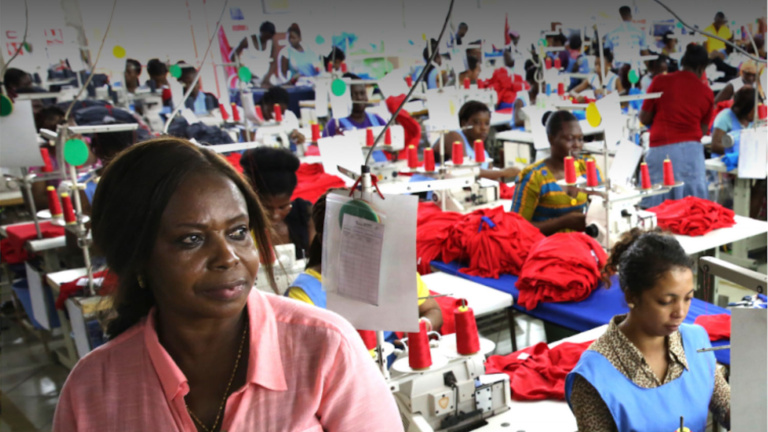
Leveraging private sector finance: Lessons from philanthropy
For blended finance to crowd-in private sector investment to social sectors and low-income countries, stimulate innovation and reach scale, greater risk tolerance among large providers of development finance is required. A more efficient allocation of public, private and philanthropic resources across development interventions depends on improved cost-benefit analysis based on additionality and risk-adjusted economic return.
The breadth and ambition of the 2030 Agenda significantly expanded the goals of development cooperation. Accordingly, the Addis Ababa Action Agenda (AAAA), which sets out the framework for delivering the Sustainable Development Goals (SDGs), covers not just domestic resources and international development cooperation, but also the role of private finance.
The Bill & Melinda Gates Foundation has seen the benefit of engaging strategically with the private sector in our programmatic work to access and harness innovation, and reach scale and efficiency, both of which can lead to big, bold and transformative solutions to the development challenges we are tackling. We’ve learned:
The power of blended and private investment for social sectors, and in low-income countries
A 2016 OECD survey showed that of the US$ 81.1 billion mobilised from the private sector over 2012-15 from official development finance interventions, 77% of flows were for projects in middle-income countries. Just US$ 7.7 billion (<10%) went to projects in the least developed and other low-income countries. More than two-thirds of the mobilised resources targeted the banking, energy and industry sectors. However, the foundation is assessing the relevance of blended finance in our programme areas – in global health, agriculture, sanitation and financial services for the poor – and the countries where we work, which are primarily low and lower-middle-income countries.
We are focused on the development objectives we want to achieve and identifying the right mix of resources that will deliver the most impact. We know that the private sector is not a substitute for public finance, and don’t want to divert resources away from governments, which are critical in the fight against poverty. But we also know that the private sector can bring huge benefit in efficiency, management expertise, an openness to innovation, and a concern with sustainability created in part through competition. We engage the private sector when they can bring clear additional value, not just to fill a financing gap.
The importance of risk tolerance
As a philanthropic organisation with extensive experience funding innovation, we believe there is greater scope for multilateral development banks, development finance institutions and private investors to partner to scale up technologies that could reduce poverty and increase quality of life. Digital and biometric identification systems, digital financial services, and non-sewered sanitation are just few areas where promising new technologies could deliver significant improvements in the lives of the poor.
Yet we know that not all institutions are equally set up to cover the high levels of financial risk inherent in funding early stages of innovation. We need to explore new models of collaboration, to scale up the most promising technologies and innovations as they get closer to commercialisation. This will require a shift in internal incentives within development finance providers including more flexible financing policies and a greater appetite for risk. Segmenting development finance and better identifying and distributing financial and non-financial risks across different institutions will also help. We are exploring how best we can take advantage of our flexibility to structure our support of early stage innovation to facilitate later stage investment from others who can take those innovations to scale.
| Global Health Investment Fund
The Global Health Investment Fund (GHIF) is a US$ 108 million social impact investment fund launched in 2012 to support the development of new drugs, vaccines and medical devices for public health challenges that disproportionately burden low-income countries. The fund is focused on late-stage global health products, and can only support products with viable business models, for example, products with opportunities in high as well as low-income markets. More than five years after launch, GHIF has committed the majority of its capital – notable because of concern about pipeline at the outset. We are excited about GHIF as an example of the potential alignment between financial and development objectives in global health R&D, and as a model of collaboration and risk sharing: the Bill & Melinda Gates Foundation and Sida provide a first loss protection up to US$ 22M and also cover a further 50% of losses after the first-loss threshold. |
The challenge of allocating resources efficiently
The goal of blended finance is to ultimately enable a more efficient allocation of resources and exploit relative capabilities, where all providers and types of finance are focused on activities that have clear additionality (“doing what others cannot”). By focusing on appropriate risk sharing and mitigation, we can unlock private sector investment to do what it does best: finance commercially viable investments. In doing so, we free up scarce public and concessional resources to focus where they are most needed.
While the foundation believes that more investment is required in social sectors and human capital, particularly innovations that have the potential to deliver greatest impact in the poorest countries, the specific projects or policy reforms that are needed will vary country to country, based on the most binding constraints to poverty reduction and economic growth. Maximising the impact of development finance on poverty, therefore requires cost-benefit analysis, to determine a risk-adjusted economic (not just financial) rate of return, and to guide allocation.
Our starting point is always the programmatic goal we are working towards. The responsibility we bear as stewards underlines the importance of focusing blended finance on investments where there is commercially viable business activity beyond our engagement. This means too, that we work hard to avoid market distortion, which could ultimately undermine the sustainable market we are hoping to see, or the benefits that are brought through engaging the private sector.
Sometimes, we have learned these lessons the hard way. For example: an investment we made to encourage commercial bank lending to smallholder farmers through a risk-sharing facility, which ultimately did not catalyse greater access to finance for smallholders. Once our risk-sharing facility was withdrawn, the costs to commercial banks to maintain lending were prohibitive and funding dropped.
Our experience has made us cautious but also very optimistic, as we continue to explore where blended finance can help us achieve the transformative change we seek.
About the authors
Annabelle Burgett is Program Officer, and Rodrigo Salvado, Deputy Director, at the Bill & Melinda Gates Foundation.
Read the full magazine issue









